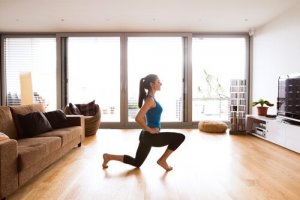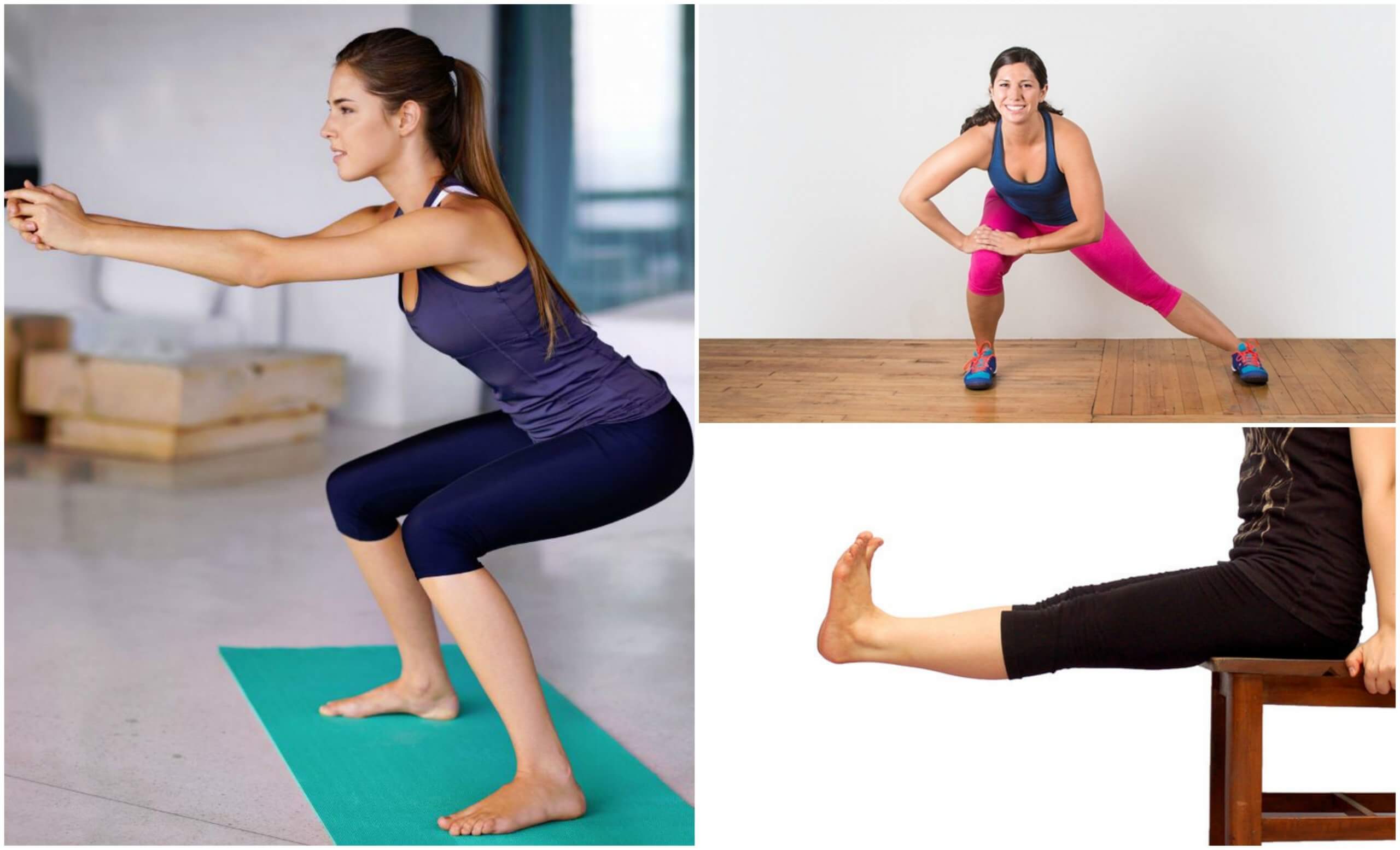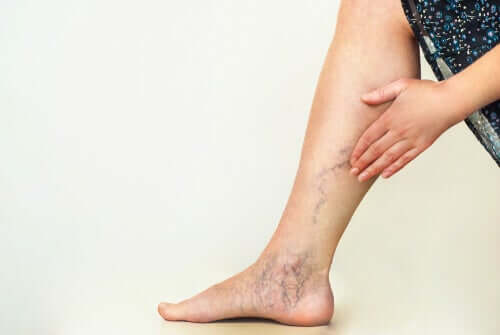How to Improve Circulation in Your Legs During Lockdown


Written and verified by the doctor Leonardo Biolatto
It’s important not to neglect the circulation in your legs during lockdown. Spending so much time at home makes it easy to fall into a more sedentary life. And this is especially true for those who live in small homes or apartments. Today we want to tell you what you can do to stay active and avoid complications.
There’s no need to build a gym in your home or start performing complicated routines. A few simple exercises on a regular basis will help improve the circulation in your legs during lockdown. The key is consistency, even more so than intensity.
Circulation in your legs during lockdown
The first thing you need to know is that blood reaches your extremities from the heart and then travels back via your veins. However, in order for this to occur properly, we need to keep our legs moving. Our muscles act as a sort of pump in order to make this process possible.
This process of blood returning to the heart is known as veinous return. When a person is a long time without moving, he or she runs the risk of developing a veinous disease. The most frequent of these is varicose veins.
And this explains why it’s so important to care for the circulation in your legs during lockdown. It’s essential for each person to choose a type of exercise or practice that’s suitable for his or her age and health condition. The idea here isn’t to force your body, but rather to stimulate it.

Keep reading: Exercises and Routines when Working from Home
Basic exercises for improving the circulation in your legs
There is a series of basic exercises that fulfill the objective of improving leg circulation during isolation. These are recommended for those who don’t perform a lot of physical activity or who have some type of health limitation.
The basic exercises are the following:
- Walking: It’s best to get in 30 minutes of walking each day. Of course, if you’re not able to get out during lockdown, then you can do your walking inside your home. Of course, it’s not as pleasant as going for a walk outdoors, but it’s important when it comes to the circulation in your legs during lockdown.
- Rope jumping: This exercise helps burn calories and moves the main muscles in the body. It’s best to do 15 minutes of jumping. However, if you’re not used to it, then start with 3 minutes and work your way up gradually. If you have other health problems, then talk with a doctor first.
- Simple movements: You can perform sessions of simple exercises for half an hour each day. Among these exercises, you should leg stretching and flexing your toes in sets of 20. You can also walk on your tiptoes for sets of 5 minutes. And finally, you can do squats.
Other exercises to consider
Other exercises that are good for improving circulation in your legs during lockdown are the following:
- Make circles with your legs: Lie down face up with your knees bent and the soles of one foot flat on the floor. Lift the other leg and make circles in the air without moving your pelvis. Rotate five times in one direction and five times in the other. Then, change legs and repeat the cycle 5 times.
- Leg crosses: Lie down face up and lift your legs. Separate them, but no further than the width of your shoulders. Then, inhale while crossing your legs in the air and exhale while returning to your initial position. Perform 5 sets of 5 leg crosses each time.
- Bicycle exercises: Once again, lie down on the floor face up. Raise your legs and move them as if you were pedaling a bike.

Discover more: 10 Tips To Help You Avoid Varicose Veins
A revitalizing massage
Another option for improving circulation in your legs during lockdown is by means of a revitalizing massage. You can do this massage yourself, but it’s even better if you have someone else do it for you.
The best time to do your massage is during the afternoon hour–this is when your legs are most tired. At the same time, it’s great if you have some rosemary oil on hand. Of course, you can also use olive oil or any cosmetic oil.
First, apply the oil on your hands and rub them together. Then, place your hands on your legs and massage with ascending movements, starting at your ankles and moving upwards. Repeat the action once again, but this time, place greater pressure on each area. And finally, do the same on the back of your legs.
Improve circulation in your legs during lockdown
Lockdown can make it complicated–if not impossible–to carry on with many normal daily activities. But remember, your health is just as important as ever, and the health of your legs requires special attention right now. Therefore, it’s important to look for ways to move your lower extremities in order to prevent complications, such as varicose veins.
All cited sources were thoroughly reviewed by our team to ensure their quality, reliability, currency, and validity. The bibliography of this article was considered reliable and of academic or scientific accuracy.
- Rodríguez, J. R. E., Quesada, F. F., & Montoya, S. B. (2014). Prevalencia y características clínicas de la enfermedad venosa crónica en pacientes atendidos en Atención Primaria en España: resultados del estudio internacional Vein Consult Program. Cirugía Española, 92(8), 539-546.
- Rivera Schettini, C. V. (2007). La incidencia del desarrollo de un programa de saltar cuerda sobre la resistencia básica de las y los estudiantes del 9º grado de educación básica del Centro Escolar “Valle del Sol.” del municipio de Apopa (Doctoral dissertation, Universidad de El Salvador).
- Bura-Rivière, A., & Boccalon, H. (2015). Fisiología y exploración de la circulación arterial. EMC-Podología, 17(1), 1-22.
This text is provided for informational purposes only and does not replace consultation with a professional. If in doubt, consult your specialist.








